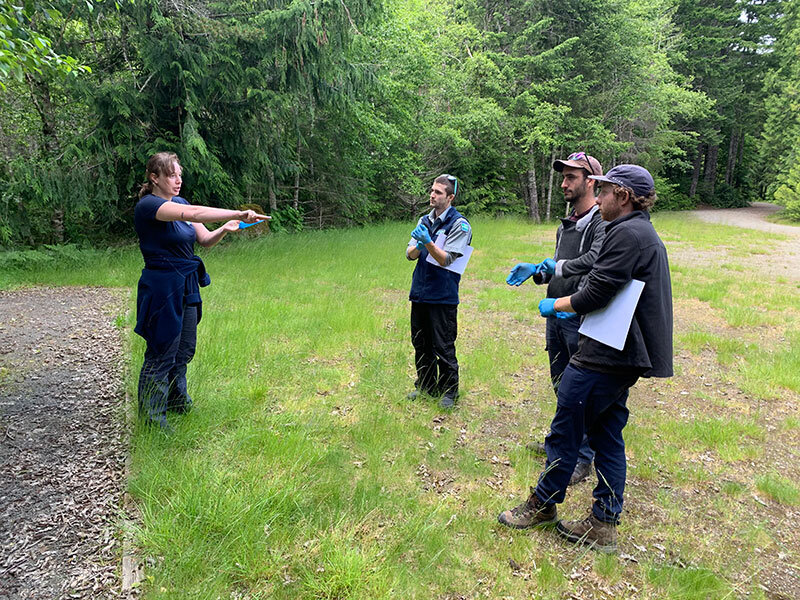
First Nations Projects | Case study
Namgis First Nation
The Challenge?
Develop a training program for local staff on Cormorant Island to learn how to best take care of their trails and infrastructure.
The Crux?
Include a thorough handover document that includes work plans, daily routines, job descriptions and a focus on Occupational Health & Safety.
On remote Cormorant Island in the Broughton Archipelago lies the famous Umista Cultural Centre. The Centre is a magnificent space that celebrates and shares the culture of the Namgis First Nations who call the island home. Around the centre is a large network of trails that take you from one end of the island to the other. Some of the highlights include a boardwalk winding through swampy water-filled bog. The track sits on elevated steel and concrete piers above the water, with amazing views of its picturesque surroundings.
Namgis First Nation tasked us with developing a training program to upskill their local people to take care of the trails. They wanted their community to have a sense of ownership over the resources they had invested in. We were asked to develop a big-picture plan for all maintenance and customer service tasks involved. Once the document detailing work plans, schedules, tasks and daily routines was laid out, we would train the local workforce with the specialized skills they would need to operate it safely and effectively.
This training project involved both classroom and field components. In the classroom, we produced and reviewed an emergency response plan and associated safety map. We outlined safety procedures for working alone and discussed proper PPE. We reviewed SOPs for work activities including job specific hazards and also included a section on WHMIS tailored to the materials that would be used.
For the field component, we demonstrated practically how to use the work plans. First, we broke out the work areas into zones using a mapping exercise. We taught staff how to maintain all the variety of facilities, including trails, toilets, signs and day use areas. We trained supervisors on general guidelines for what to look for when assessing a potential danger tree. Staff members received safe tool use certifications for brushsaws and chainsaws, as well as learned how to maintain them.
The final component of the project involved developing staffing requirements, with job descriptions and tasks laid out for each role. We discussed how to provide customer service in wilderness areas and shared our practical experience in the field.
The project allowed the Namgis First Nation to take control of their wilderness area and gave their team the skills to operate it with confidence.
Location:
Alert Bay, Cormorant Island, British Columbia
Date:
2020
Client:
Namgis First Nation
Scope:
• Develop Training Program
• Deliver Training to local staff




